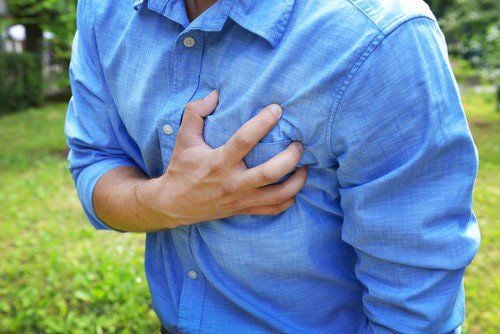This is an automatically translated article.
Docalciole 0.25 mcg drug with the main ingredient is Calcitriol, used to treat osteoporosis in patients with chronic kidney disease. Let's find out what Docalciole drug works in the article below.
1. What is Docalciole 0.25 mcg?
Docalciole belongs to the group of minerals and vitamins, produced in the form of soft capsules by Domesco Health Import-Export Joint Stock Company with registration number: VD-28371-17
Docalciole's active ingredients are: Calcitriol 0, 25 micrograms.
Excipients of Docalciole are: Butylate hydroxyanisol, Sodium benzoate, Butylate hydroxytoluene, Sicovit red, Medium-chain triglycerides, Gelatin bloom 200, Titanium dioxide, Liquid Sorbitol, Glycerin, Sunset yellow lake color, Tartrazin lake color and Crystal water pure.
2. What are the effects of Docalciole?
Indications for the use of Docalciole 0.25 mcg in the following cases:
Correction of abnormalities in calcium and phosphate metabolism in patients with renal osteodystrophy. Treatment of postmenopausal osteoporosis. Hypocalcaemia, hypocalcemia due to idiopathic hypoparathyroidism, postoperative hypoparathyroidism or pseudohypoparathyroidism. Docalciole 0.25 mcg is contraindicated in:
People with health conditions related to hypercalcemia. The patient was identified with metastatic calcification. Hypersensitivity to Calcitriol (or similar drugs) or components of Docalciole. The patient has a history of vitamin D toxicity.
3. Instructions for using Docalciole 0.25 mcg
Reference dosage:
Docalciole dosage in the treatment of renal osteodystrophy:
The starting daily dose is 0.25mcg. After 2-4 weeks, if the condition does not improve, the dose can be increased to 0.25 mcg (requires serum calcium testing every 2 weeks). Usually, for patients with normal or only mildly decreased calcium levels, a dose of 0.25 mcg per day is sufficient. Dosage of Docalciole in the treatment of postmenopausal osteoporosis:
Recommended dose of 0.25mg x 2 times daily. Serum calcium and creatinine levels should be checked at 1, 3 and 6 months and every 6 months thereafter. Dosage of Docalciole in the Elderly:
Dosage of Docalciole in elderly patients is similar to that of younger adults and no dosage adjustment is required. How to take Docalciole:
Docalciole medicine is directed to use by a specialist or pharmacist. Patients should take Docalciole at the correct dose in the prescription. Docalciole is taken orally with an adequate amount of water about 250ml.
4. What are the side effects of Docalciole?
During the use of Docalciole, patients may experience some side effects such as:
Immune system disorders: Hypersensitivity, urticaria; Metabolism and nutrition disorders: Hypercalcemia, decreased appetite, drinking a lot of water, dehydration, weight loss; Mental disorders: Lethargy, psychosis; Nervous system disorders: Headache, somnolence, muscle weakness, sensory disturbances; Cardiovascular disorders: Cardiac arrhythmias; Digestive disorders: Abdominal pain, vomiting, nausea, constipation,...; Skin and Subcutaneous Tissue Disorders: Rash, pruritus and erythema; Musculoskeletal disorders: Growth retardation; Renal and urinary disorders: Urinary tract infections, polyuria; Laboratory Abnormalities: Chronic hypercalcemia is associated with increased serum creatinine. Note: The above undesirable effects may not be complete because each patient has a different body. Docalciole side effects can be massive or individual. So when in doubt about the side effects during the use of Docalciole, immediately inform your doctor or pharmacist for timely support.
5. Some warnings and cautions when using Docalciole 0.25 mcg
Patients using Docalciole should note:
Be careful with hypercalcemia. Consult your doctor about diet and symptoms of hypercalcemia. Docalciole should be discontinued when: Serum calcium level increases by 1 mg/100 ml or serum creatinine increases > 120 μmol/l. Patients treated with the drug Docalciole but have difficulty walking may cause hypercalcemia. Docalciole may increase serum inorganic phosphate concentrations during treatment. Therefore, patients with renal failure and hypophosphataemia should be cautious. The serum calcium phosphate factor (P x Ca) should not exceed 70 mg2/dl2. Patients with vitamin D-resistant rickets who are using Docalciole should use oral Phosphate as directed by their doctor. Do not use other vitamin D-like substances while taking Docalciole to help avoid excess vitamin D in the body. Patients with normal kidney function when using Docalciole in treatment need to drink a lot of water and avoid dehydration. In patients with normal renal function, chronic hypercalcemia may be accompanied by an increase in serum creatinine. Docalciole contains the ingredient sorbitol. For patients with rare hereditary disorders of fructose intolerance should not use the drug..
6. Interaction Docalciole 0.25 mcg with other drugs
Patients should pay attention to some interactions of Docalciole such as:
Be careful with diets containing calcium products. Docalciole in combination with thiazide diuretics may increase the risk of hypercalcemia. Docalciole in combination with Corticosteroids: May increase calcium absorption. Docalciole in combination with magnesium-containing products (eg antacids): May cause hypermagnesium in the blood. Docalciole in combination with bile acid binders including cholestyramine and sevelamer may reduce the absorption of fat-soluble vitamins, thereby reducing the intestinal absorption of calcitriol. The above article has provided information on what Docalciole drug has, dosage and notes when using it to readers. To ensure safety for health and maximize the effectiveness of treatment, patients need to take Docalciole 0.25 mcg drug exactly as directed by the doctor.
Please dial HOTLINE for more information or register for an appointment HERE. Download MyVinmec app to make appointments faster and to manage your bookings easily.













